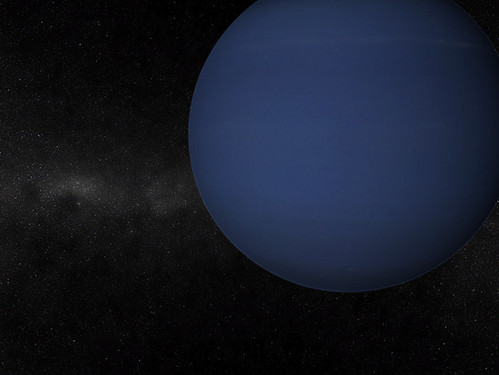
One hundred years ago today astronomer Percival Lowell was looking for a ninth planet in the Solar system. Its existence and its rough location had been predicted by other astronomers based on the perturbations of the orbits of other bodies (notably Neptune) but nobody had ever seen it. Lowell was convinced it was there and he was looking for it.
Today, one hundred years later, astronomer Michael E Brown is also looking for a ninth planet. Today's predicted planet was once again suggested by the peculiar orbits of other bodies (notably the distant dwarf planet Sedna with a highly elliptical orbit). To date, nobody has seen the new ninth planet but Brown is convinced it's there and he's looking for it.
In the intervening century a lot of stuff has happened but a surprising amount of it canceled itself out leaving us back where we started. Lovell didn't live to see the discovery of his ninth planet (which he called "Planet X"). It was discovered by astronomer Clyde Tombaugh fourteen years later and named "Pluto." For seventy six years "Pluto" was the ninth planet in the Solar system, but with the dawn of the 21st Century astronomers started discovering lots of new objects as large or larger than Pluto and, rather than posting the current number of planets like a stock ticker that could be constantly updated, scientists decided to set the bar higher, insisting that planets had to be much larger than Pluto, and demoting Pluto, in 2006, to "Dwarf Planet" status (along with all of his newly-found companions.) Once again there were eight planets. And scientists were pretty sure that would be it.
Turns out they were probably wrong.
The evidence for the 21st Century Planet X comes from the very eccentric orbits of some of the other, smaller objects way out in the Kuiper belt (sort of like an asteroid belt only out past Pluto). It turns out that these objects have really similar orbits -- all 30 degrees off from the ecliptic and all on the same side of the sun. The theory is that they have similar orbits because they have all had close encounters with the same massive object that spends most of its time on the other side of the sun, 30 degrees off the ecliptic in the other direction. This article has a helpful picture.
The order of the planets that I learned as a teenager uses one of the few G-rated mnemonic sentences I can easily remember. "Mother very easily made jelly sandwiches under no protest." for "Mercury, Venus, Earth, Mars, Jupiter, Saturn, Uranus, Neptune and Pluto." Some years ago (while Pluto was still a planet) it crossed inside the orbit of Neptune and, technically, became planet eight with Neptune in the number nine spot. But the new Planet X is well outside the orbit of Neptune (as much as 31 times as far from the sun) so as long as they give it a "P" name I won't need any re-education.
Perhaps they could name it after Priapus -- the Greek god of Nature, Gardens and Beekeeping. That'd work.
